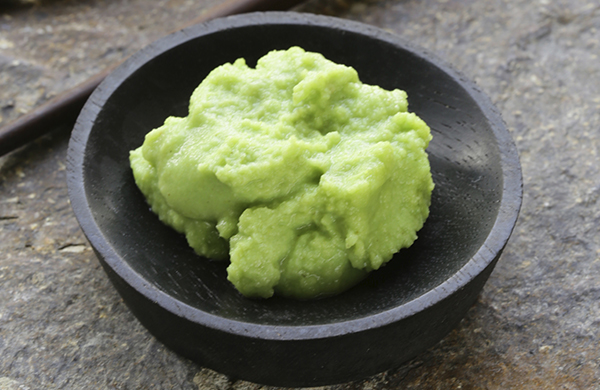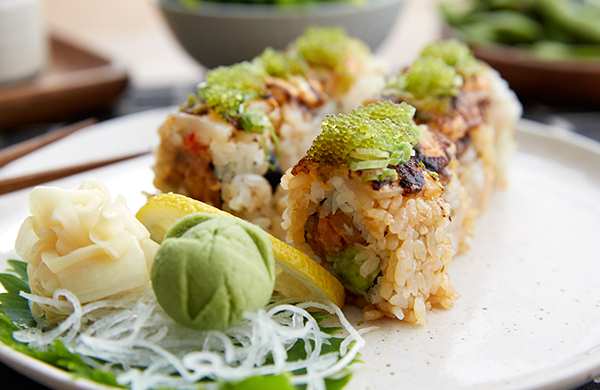
The heat spreads from the tongue, lighting up the hard palate, then the nostrils, rushing toward the forehead as tears spring to the eyes. At sushi restaurants across the country, this singular sensation overwhelms taste buds after even just the tiniest bead of wasabi. With its brilliant green hue and its potent punch, one might wonder what in the world this stuff is made of. The answer? That depends.

What Is Wasabi?
Wasabi the plant (not the condiment) grows along streams and riverbeds in Japan, and resembles a warty carrot, or a ginger root tinged green. It's a member of the brassicaceae family, which also includes other pungent plants like horseradish, mustard, and cabbage.
To make the condiment, chefs grate the root with graters made of sharkskin. It must be grated so finely that it becomes a paste—making this a time-consuming endeavor. On top of that, wasabi must be made to order, never batch-made ahead of service. That's because the flavors lose all their intensity in just 15–20 minutes.
Sushi and wasabi have long been served together, and not just because their flavors are complementary. The condiment actually serves two practical functions. For starters, many sushi experts believe that wasabi's strong aroma helps to mask the smell of the fish, meaning your nose won't be overpowered and you can actually taste your sushi better. Second, but perhaps most important, wasabi boasts antibacterial properties, which may lower risks associated with consuming raw or under-cooked fish. It's a condiment with a purpose!
Pro Tip: Although many diners mix wasabi into a pool of soy sauce for dunking, this is often considered bad form, especially in restaurants that use genuine wasabi—the saltiness of the soy overwhelms wasabi's delicate flavor.

Are You Eating Real Wasabi? Probably Not.
Wasabi's short shelf life and the plant's scarcity in the US mean that even in some of the best restaurants it's rare to find true wasabi. So what are you actually eating?
Most restaurants create a condiment that's a near-doppelgänger for true wasabi. To make this faux wasabi, ingredients like horseradish, mustard, and green food coloring or spinach powder are blended together to form a paste that boasts a similar spiciness to real wasabi, but lacks its subtle herbal notes.
Don't feel bad, though—real wasabi is so scarce that even many restaurants in Japan use the fake stuff. Which means the imposter wasabi is actually pretty authentic!
And yes, it's probably safe to say that your wasabi peas don't actually contain any real wasabi, either. Sorry.




